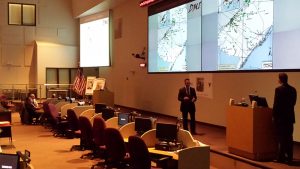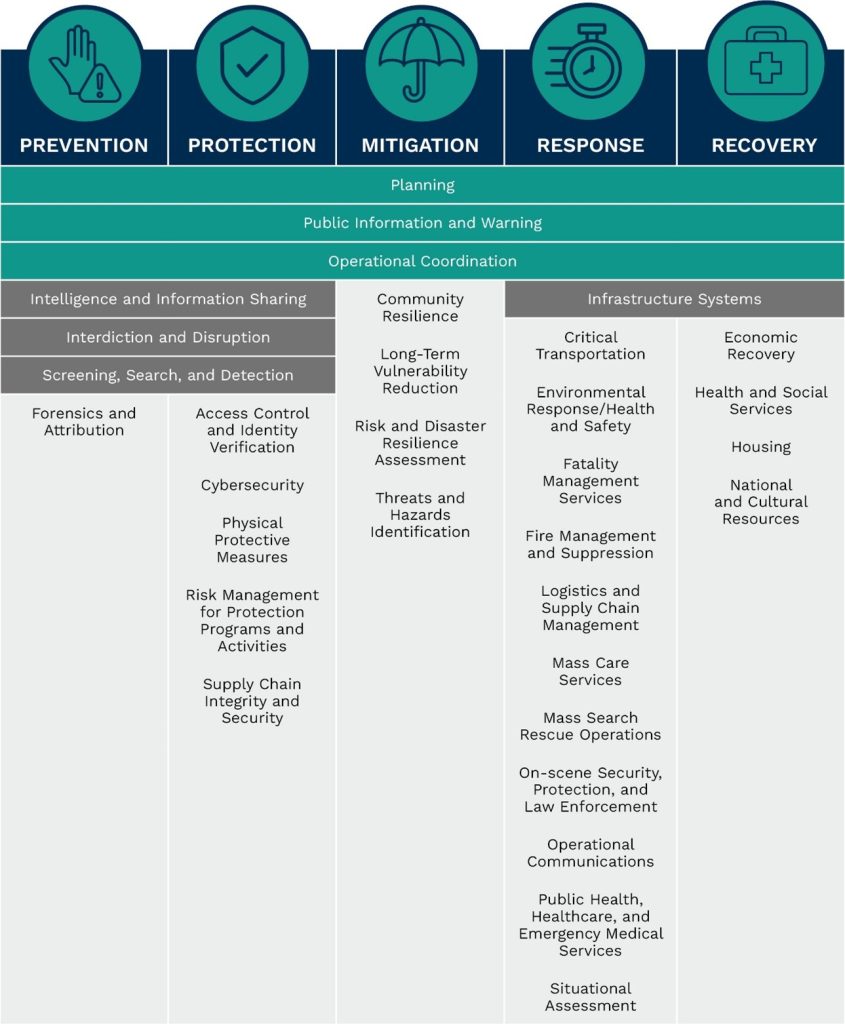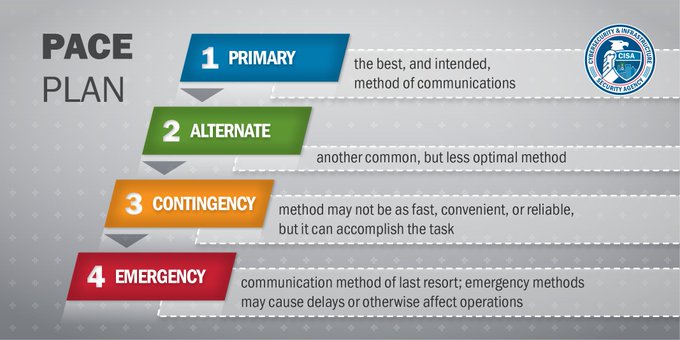10 719-14 – Superbowl® 48
Please note: the wordmark Superbowl® is a registered trademark of the National Football League. I am referencing via fair use, in that this is not commercial use of the term. Comments which follow are not about the game or the NFL, but rather the planning and other aspects around the event, which I personally participated in.
We actually got a DRO number for this event – something somewhat unprecedented at the time. Usually, the Red Cross does not issue DRO numbers for events and only does that for incidents where there were costs over $10,000 expended by the organization. We (our disaster leadership in New Jersey) successfully argued that we needed to be prepared for such an occurrence on a consequence management basis. More of a ‘what if’ scenario. We got the DRO – and I believe all future big games (as well as other events of national significance) where the Red Cross is a partner, have received DRO numbers as well. This is important for two reasons, it helps consolidate the costs – for potential assistance beyond a single chapter or region’s budget, and it gets the attention of the Red Cross’ National Headquarters. Both are valuable for providing the best service possible.
Also, all of the resources we would need to pre-position could only be ‘activated/mobilized’ during a DRO – including visiting staff support. Also, it helped quite a bit to have this National Security Special Event or NSSE (which was SERE rating 1) be considered by our national headquarters in the same way as they treated the Presidential Inauguration (an event the Red Cross participates in each time it happens).
AI Generated Text from Google Gemini
Super Bowl XLVIII, held at MetLife Stadium in 2014, presented unique security challenges due to its outdoor setting and the potential for severe winter weather.
Key security measures included:
- Enhanced Perimeter Security: A multi-layered security perimeter was established, incorporating physical barriers, checkpoints, and surveillance technology to control access to the stadium and surrounding areas.
- Intelligence Gathering: Law enforcement agencies collaborated to gather and analyze intelligence on potential threats, including individuals and groups that could pose a risk to the event.[1]
- Crowd Management: Extensive crowd management plans were implemented to ensure the safe and orderly flow of fans into and out of the stadium, as well as within the venue itself.
- Counterterrorism Measures: Specific counterterrorism measures were put in place, including bomb-sniffing dogs, explosive detection equipment, and specialized tactical units.
- Emergency Preparedness: Contingency plans were developed to address a range of potential emergencies, including severe weather, medical incidents, and civil disturbances.[3]
The planning process involved extensive collaboration between various agencies, including:
- Law enforcement agencies: Including the FBI, Secret Service, and local police departments.[4]
- Emergency management agencies: Including fire departments and emergency medical services.[5]
- MetLife Stadium and the NFL: To ensure the safety and security of players, staff, and fans.
- Private security companies: To provide additional security personnel and support services.
The success of Super Bowl XLVIII security efforts demonstrated the importance of careful planning, interagency cooperation, and the utilization of advanced security technologies in safeguarding large-scale events.[7]
While the Red Cross was not involved from the ‘get-go’ on the planning for this big game, we were part of the team before the event occurred. This was primarily due to the relationships we have with the state’s office of emergency management and its leaders. The months leading up to the game itself were filled with meetings, traded e-mails, and quite a bit of ‘knowledge’ shared by us as to what the Red Cross does – and more importantly what we do not do. I had one state-level planner think we ran fleets of ambulances in the U.S. That was corrected quite quickly. We did however help those officials understand the capabilities of statewide resources in disparate organizations – some public, some private – which could be called into service, should consequence management plans need to be implemented. That’s a fancy way of saying we had a plan to house a lot of people away from an impacted site, should it need to happen. Now getting them all there, was another thing. That is no different for a major sporting event with nearly 60,000 people in attendance (not counting all the support folks around the stadium), than it is for a major hurricane.
We practiced with county officials, we exercised with FEMA, and we prepped our own Red Cross teams to be ready for just about anything (we usually are!). On the day of the big game, I was at the SEOC watching the game from a safe distance away, and on the biggest tv screen possible.

I would not say ‘luckily’, but more like ‘purposely’ there were no major incidents at the game. After the game, there were challenges with the number of people who tried to catch trains into NYC, but none which extended into sheltering or any other Red Cross missions. I had the shift the next day at the stadium’s emergency management site for demobilization, but that was a quick morning -even with a snowstorm which followed the game. I got there and everyone was already packed up. By the way, no event hotwash, after-action report (which I was involved in), or any other improvement planning. I really hope something was documented, because as of this book’s publication, that same stadium – and most likely many of the same planners and organizers at the state – will be the host for a number of FIFA World Cup® games in 2026. Will I be working those games in the same way I did for this one? I seriously doubt it. Like I mentioned in the Sandy Lessons Applied, sometimes it is better to lead from the middle or the rear.
Lessons Learned
From a leadership perspective, one big lesson was to train others on how all this planning works, in practice. Lots of people think the planners are not ‘responders’ or in the ‘Response’ phase. They absolutely are deeply involved. Emergency Services – like police, fire, rescue, public works, etc. – are all part of Operations. Planning is its own beast, and spans all of the phases or time frames around an incident or event:

I learned that building personal relationships on a disaster response (or in this case an event response) are fleeting – they rarely last beyond the incident or event itself. As a leader you are representing the organization, not yourself – so sometimes it is best just to help get the job done. I already knew those personal relationships for professional cooperation, coordination, collaboration and communication come from months and years of working together, training together, and exercising together. That is the only way.
Lessons Applied
- Really work through consequence management planning. We built plans for what if everyone in and around the stadium had to be moved by bus to a holding location for investigation. 75,000 people. That part of our plan document was longer than what we were actually planning to do on game day itself.
- Stand your ground as to what your organization’s capabilities – and needs from others – are. Like that example I noted above, when someone thought we (the Red Cross) ran a fleet of ambulances. Or when every Red Cross person staffing the Public Safety Complex (IYKYK) needed to be on the ‘list’, so they could get in that building. For me, this lesson was not applied in the Papal visit in 2015 (we operated an independent Emergency Operations Center from that of government in Philly, and were not directly integrated into their operations as we were for the SuperBowl®. However, we did apply it to PGA® events and others in NJ where we needed to be much more on the ‘inside’ than say a vendor or contractor. Those are certainly smaller scale events than an NSSE, but I am passing this intelligence about what was done at the SuperBowl® on to others, as we have the FIFA® World Cup finals (and other games, events, etc.) coming to New Jersey’s MetLife Stadium in 2026 (and lots of other places, too).
- Understand and amplify the use of interoperable communications systems. This is critical for decentralized leaders. Utilize (and fund!) a PACE plan:

Source: CISA - Use these events as mentoring and training opportunities – even for the bosses (SS, EB) – towards future events and large disasters. The experiences for those folks will last a lifetime.
- https://www.congress.gov/event/113th-congress/house-event/LC26862/text ↵
- https://www.cbsnews.com/newyork/news/protection-package-4000-security-officers-to-work-super-bowl-xlviii/ ↵
- https://www.congress.gov/event/113th-congress/house-event/LC26862/text ↵
- https://www.congress.gov/event/113th-congress/house-event/LC26862/text ↵
- https://www.congress.gov/event/113th-congress/house-event/LC26862/text ↵
- https://facilityexecutive.com/geared-big-game-super-bowl-xlviii-gets-super-sized-security/ ↵
- https://www.govinfo.gov/content/pkg/CHRG-113hhrg90883/html/CHRG-113hhrg90883.htm#:~:text=The%20success%20of%20the%20February,at%20the%20local%20and%20State ↵
National Security Special Event
Special Event Assessment Rating - see https://www.everycrsreport.com/reports/R47439.html
State Emergency Operations Center
Primary, Alternate, Contingency, Emergency
